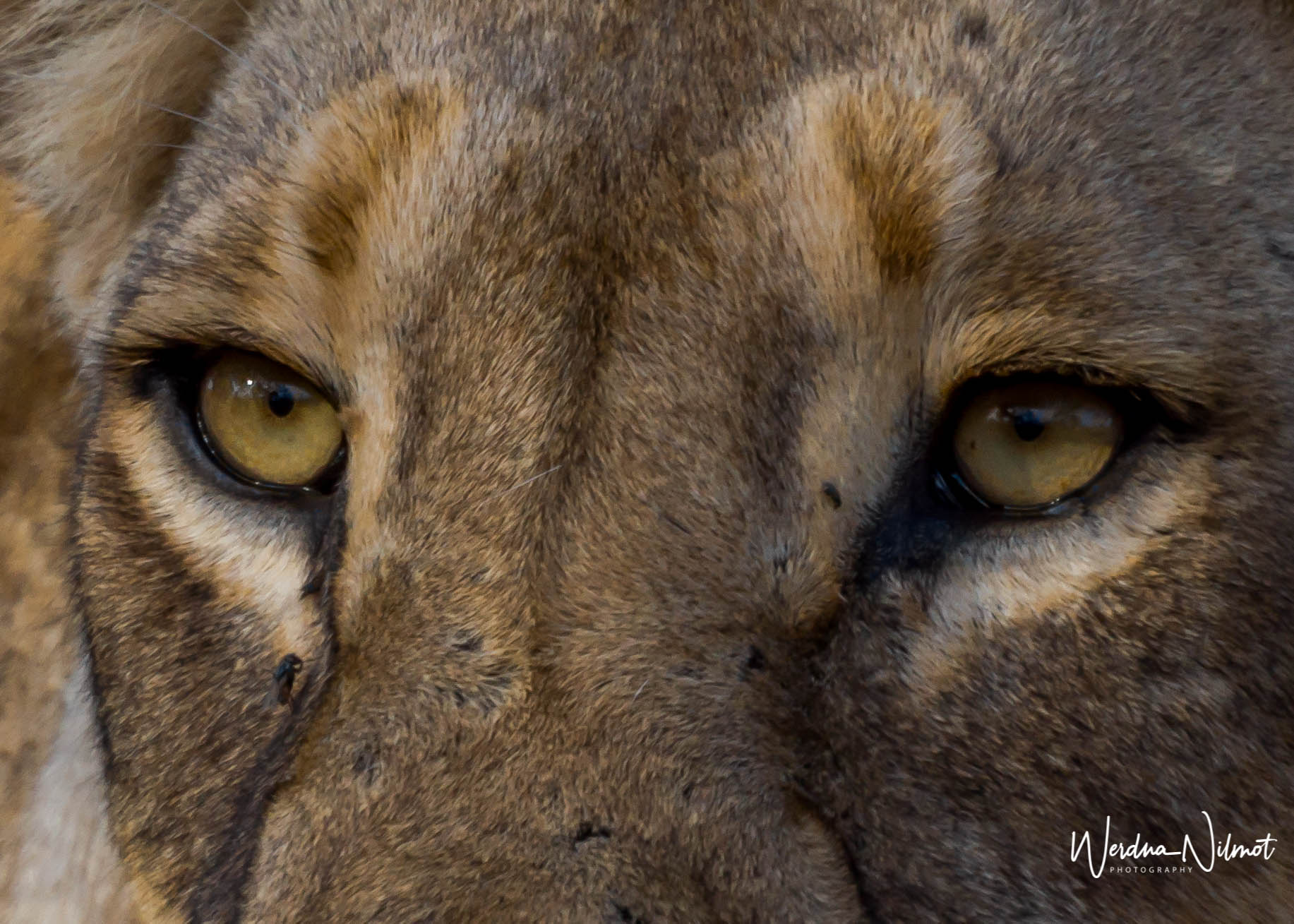
- The eyes of a lioness close up
We had visited the Kruger National Park in South Africa twice previously, in November 2015 and 2016. The first time was spectacular, only to be surpassed by the second visit, and this most recent trip, 23-November through 3-December, 2018 the best yet. I believe that this is because the Kruger is so vast, so rich with wildlife, with a potential “money shot” experience around every corner of whatever road you are on. For many, especially wildlife and nature photographers, The Kruger must be savored over multiple visits in order to extract its deep, rich magic.

- A lone elephant grazing in the vastness of the Kruger National Park
First timers will surely be overwhelmed, as we were. It doesn’t matter how much research is done, how many questions are asked, how painstakingly detailed your self drive itineraries are prepared. One buffalo kill just off the road, with 7 or 8 lions gorging themselves and the hyenas, jackals and vultures waiting patiently nearby, and poof! two hours have passed, and you realize that the 6:30 gate closing is an hour away, with 35 kilometers of bumpy gravel roads in front of you. You start each day with a general plan and direction…and then it is up to the road…

- On a private, full day game drive aboard a “10 seater” in the Kruger
After our second visit in November 2016, we really had not contemplated another visit to the Kruger any time soon. We had literally “seen it all” in 9 days. Big 5? Check, several times. Cheetahs? Check. Wild Dogs? Check. Honey Badger? Check. Surreal sunrises and sunsets over the vastness of South Africa? Check. About the only bucket list item missing was the extremely rare pangolin, which many lifelong Kruger visitors have yet to see. In short, we were satisfied. And then…
In early March 2018, our friend Deb visited for a weekend of wildlife photography. She casually mentioned that she was planning her first visit to the Kruger in late April, and was having some difficulty arranging lodging for more than one or two nights at any of the rest camps in the park. We explained to her that she was trying to book reservations during a very busy season, that most people reserve months in advance, not weeks. She seemed somewhat disappointed. She had enjoyed both our notes and photos from our previous visits, and really wanted to go with her sister. My wife, JET, looked at me and said nonchalantly, “Deb, if you can wait until November, we’ll go with you and Sheila…”

- Our last full day in the Kruger…a selfie with elephants at Tshokwane picnic site
Just like that, the hunger returned. Planning in earnest started the next day. Timeframe: November 2018. Duration: around two weeks including travel. Rest Camps: TBD. Within a week, I had put together a detailed budget for two parties of two traveling together, soup to nuts, including how much in Rand per person for spending money. I focused on Satara rest camp, mainly because our most fruitful sightings had been near this camp. Although JET and I had stayed at multiple camps on our first two visits, we decided this time that a single camp made more sense and we had not yet stayed at Satara.
The SanParks website showed a two bedroom bungalow available, each bedroom with en suite bath, for 9 consecutive nights in our desired time frame. I reserved the bungalow and let Deb know that we would have to make a hard commitment soon and pay for the reservation to lock it in. Within 2 weeks of our initial conversation, we had a fully paid reservation for 9 nights at Satara in a GC6BD guest cottage. By the end of April, flights had been booked, a rental vehicle reserved as well as hotel rooms at JNB for our first night. We were good to go…
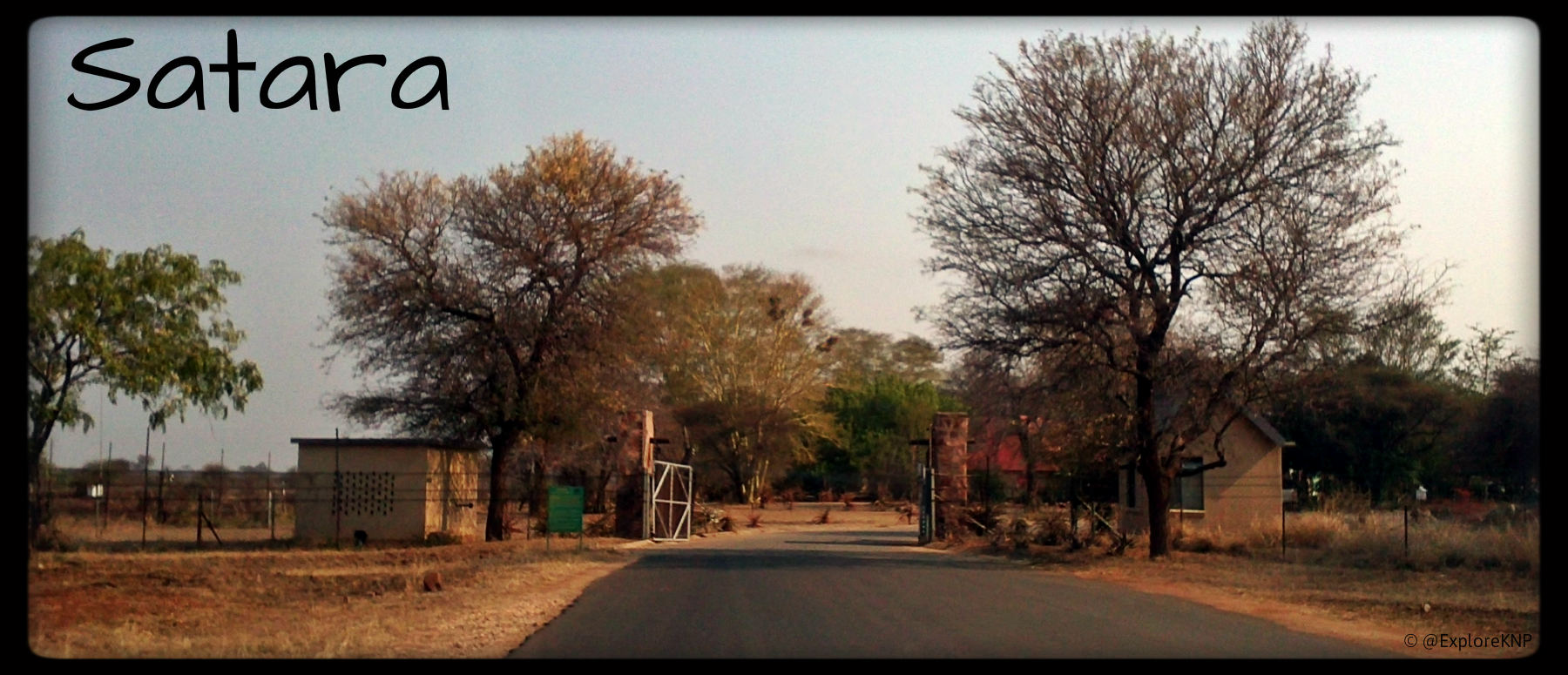

Let’s face it, traveling 36 hours to anywhere is brutal. Long international flights are never fun. There are multiple options from South Florida to Johannesburg and we have tried a couple different routes. The best we’ve found is Delta to ATL and then a direct 16-hour flight across the pond. It’s grueling but at least you can settle in one spot for the duration. Our flight left ATL around 6:30pm and we arrived in JNB at 4:40pm the following day. The City Lodge hotel is adjacent to the international terminal and we have found it to be a convenient spot for a good night’s sleep before traveling on to the Kruger the following morning.
Travel tip: You can order a SIM card with call minutes and data very reasonably on line, and have it ready at the airport when you arrive.https://b4i.travel/

Our domestic flight left at 10am and we landed at SZK, inside the Kruger National Park, within the hour. After stopping at the SANParks desk to confirm our reservations and pay the conservation fee, we picked up our rental car (a Hyundai H1 premium van) and were on our way. Our goal was to arrive at Satara by 5:30pm in order to check in and confirm our four pre-arranged full-day guided game drives. We had plenty of time to make a stop at the Skukuza rest camp for a new map and bottled water before heading north on the H1-2.

Our very first game drive, traveling the tar roads from Skukuza to Satara, did not disappoint. We saw four of the Big 5 and many iconic Kruger animals including zebras, giraffes, warthogs, baboons, and (our favorite) impalas. JET has composed a little song just for the impalas and within minutes we were all singing along with gusto. “Impala! Impala! We love you! Impala!” This was to become the theme for the week. Every animal we saw, from the ubiquitous impalas to a rare mother leopard with cub, was sung to and thanked before driving on.

We arrived at Satara on schedule and were soon tucked into our home for the week, a two-bedroom, two-bath bungalow with ample great room and kitchen. It was perfect for two couples traveling together or in our case one couple and two sisters. We had barely settled in before there was a knock at the door. Edward, head guide at Satara, stopped by to discuss the week’s arrangements. He was to be our guide and would pick us up at 4:45 the next morning.


Rather than give a day-by-day account of all we saw and experienced, the following are just a few of the many highlights from eight full and two half days we spent driving around the Kruger.

Satara is located very close to the S100, a road famous for its big cat sightings. Edward took us there first thing the morning of November 25. We drove about 3/4 way east, sighting among other things a beautiful fish eagle.

Edward remarked it was a “quiet morning” and turned back in the other direction. Shortly after he turned we came upon two lionesses by the side of the road. They were soon joined by six more, moving among the few cars there to witness this extraordinary event.


Deb remarked that all we needed now was a big male with a beautiful dark mane. No sooner were the words out of her mouth than he magically appeared weaving his way through the tall grass, magnificent in the morning sunlight.

Later in the day we had stopped near a dry riverbed to watch some elephants taking a mud bath.

As we waited, we noticed a lioness intently watching a warthog. She was crouched in a pouncing position and we wondered if we might witness an actual kill. But it was during the heat of the day, almost 94 degrees, and Edward said too hot for her to expend the energy. Sure enough, she eventually walked away towards the shade on the far bank. “Pumba” lived to see another day. By the end of our first day we counted 39 unique animal sightings including the Big 5. What a great start to our week!

The following day we planned to self-drive north to Olifants for brunch and then take a slow, meandering drive back south. The camp is located high on a hill with some of the most beautiful views in all of Kruger.

After brunch we headed south on the H1-5 and then turned west onto the S39. Thus began the most bone-jarringly bumpy road we have ever experienced. Have you ever done something that you sorely regret but are too far committed to turn back? We kept thinking “it’s got to get better!” and it just never did. The 28km drive to Timbavati left us feeling like we’d been through a rock-polishing tumbler.
There were some highlights: a beautiful giraffe drinking at a water hole and an adorable baby ellie.
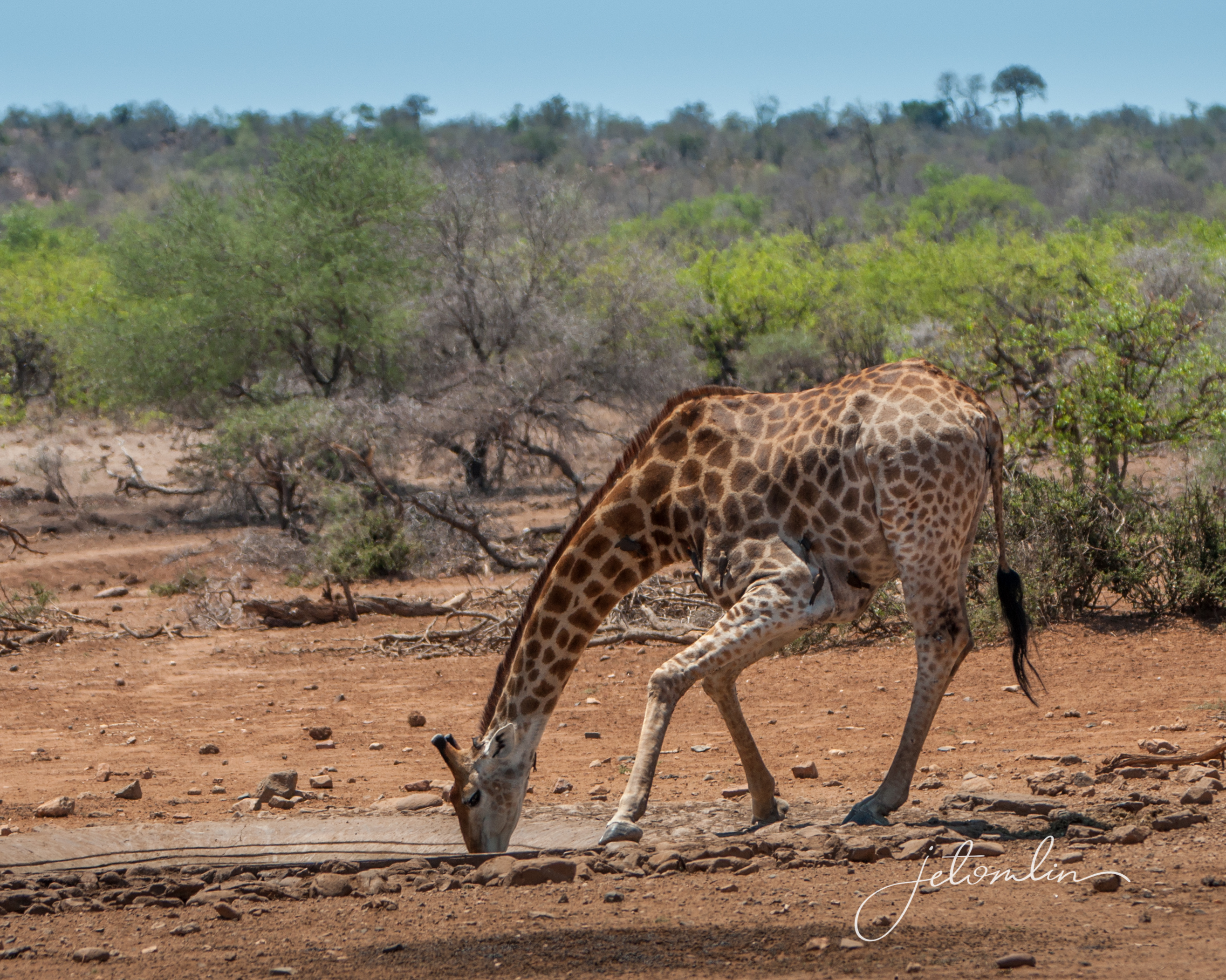

But within the nightmare of the drive there was something even worse. We had stopped at a cistern to watch some elephants when suddenly out of nowhere we were engulfed in a dust storm. We were pummeled with rocks, sticks, and dirt as we quickly closed our windows. It circled around our car and then spun out across the clearing, leaving us gasping. What the heck?!? JET marked it a “dust devil” on her sightings list. The next day we described it to Edward and asked what these mini-tornadoes are called. He replied “dust devil.”
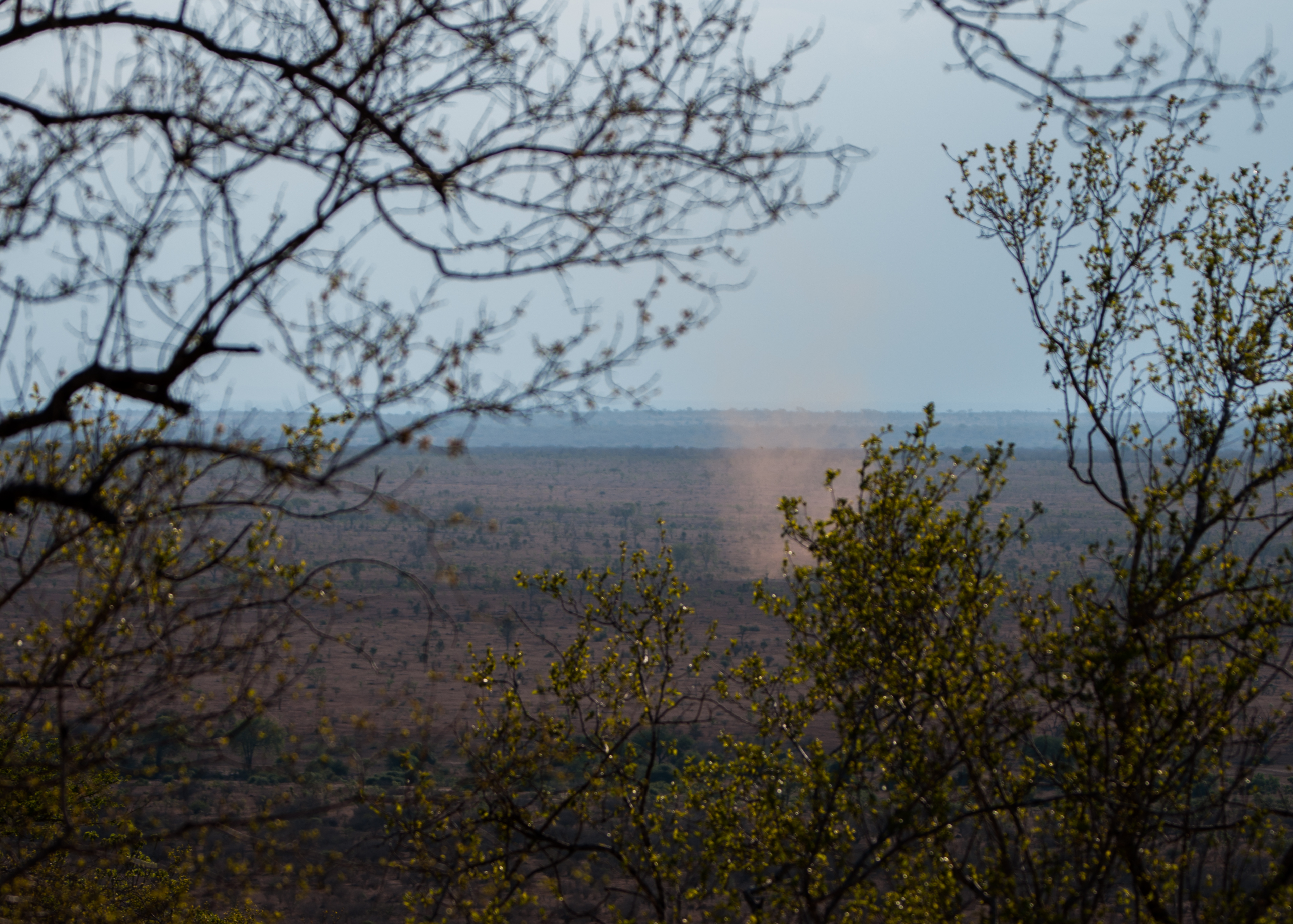
Edward picked us up at 4:45 the morning of November 27, our 36th wedding anniversary. We started the day with an exceptional sunrise.

One of the advantages to hiring a private guide through the Kruger camps is that the park rangers are allowed on the no-access roads. No one else, including the outside concessions, can drive on these roads. We had the privilege to take many of these roads and were treated to some incredibly rare and close-up sightings.
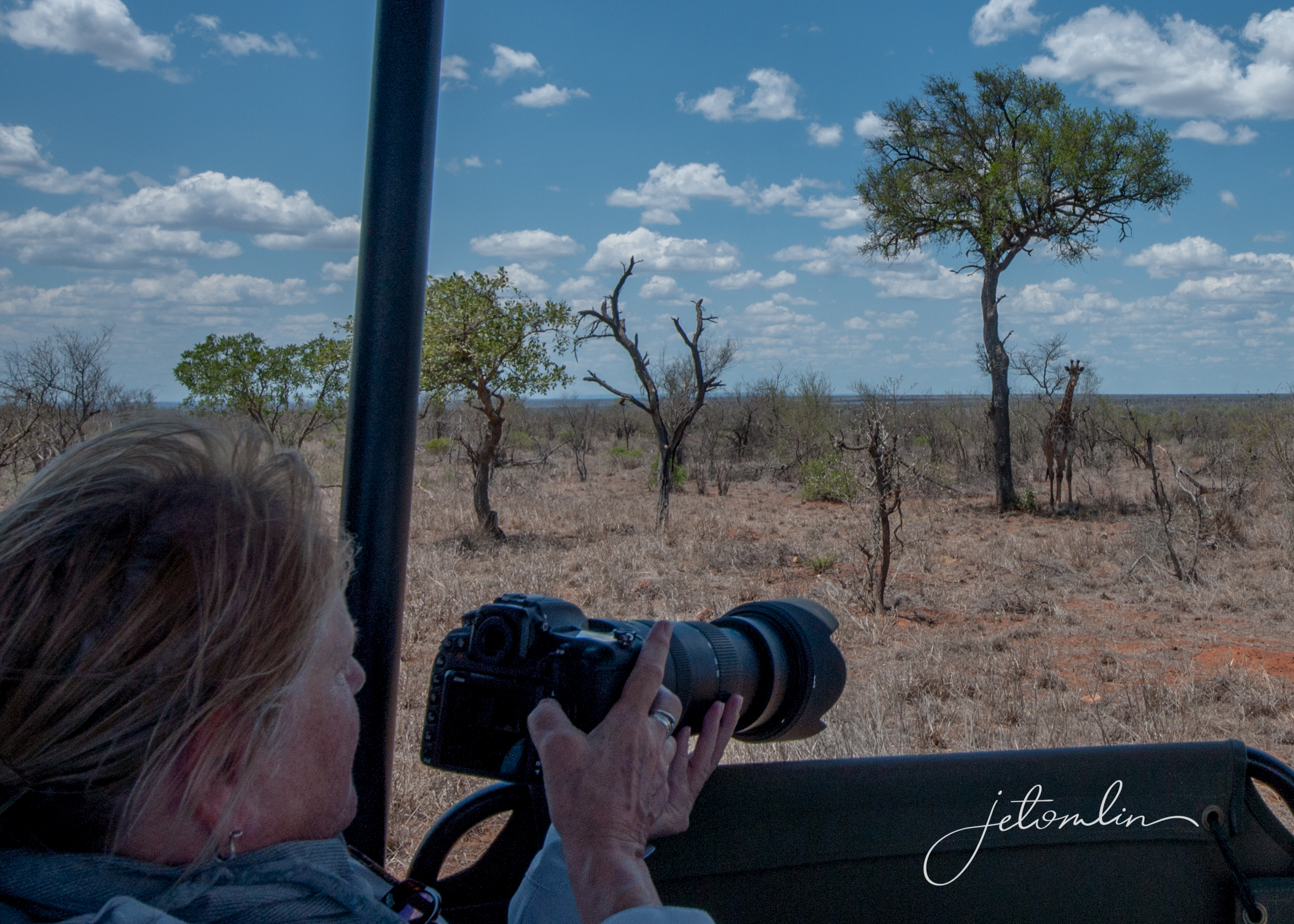
Just as we turned off a no-access road onto the S126, a passing ranger told us of four male lions sleeping up ahead. Sure enough, they were there. As we watched they slowly woke up and made their way towards a water hole. Within a few minutes we were treated to eight lions, four males and four females, lounging around the water hole. It was a spectacular sight and we enjoyed their beauty for a long time.



As if the day had not already brought enough, Edward had one more surprise for us. He suddenly stopped the vehicle and backed up. “Owl” he whispered. And there, sitting so quietly in the tree we could hardly believe our eyes was a Verreaux’s eagle owl. An exquisite creature and a first for us all.

As Edward dropped us at our bungalow that evening, he told us of lions on a fresh buffalo kill on the S36, just south of the H7. Our plan was to be out the gate at 4:30 the next morning and head straight there.
November 28 came early and we were one of the first cars at the lion kill. Four large male lions were feasting on the buffalo, the body was gruesome but still recognizable. Hyenas, jackals, and vultures lurked in the background, waiting to steal a scrap or two.


Another big male lounged a dozen yards away and even more drama awaited us at the water hole on the other side of the road. Four lionesses sat guarding at the water’s edge while giraffes and zebras stood by, anxious to take a drink. One at a time they approached the water hole, only for a lioness to lift her head as if to say “go ahead, I dare you.” We could have watched this pageantry forever but cars continued to arrive so we moved on, letting others take their turn at this prime viewing spot.


We meandered our way down to Tshokwane picnic site, where we ordered “roosterkoeke” toasties, grilled cheese & tomato on delicious bread. A cheeky monkey jumped up on the table and took off with half a sandwich before we even knew what happened. So it goes picnicking in the bush!

While we checked the sightings board at Tshokwane, a couple traveling from the south told us of three leopards on the Marula Loop along with another owl. We drove back and forth on the loop four times but did not see any leopards. We did, however, spy another Verreaux’s eagle owl. Two owls in as many days! On our way back north another couple told us of a lioness with cubs and this time we struck gold. In the late afternoon drizzle two lionesses with three cubs moved from the bushes about 100 meters away and crossed the road in front of us.

Barely two kilometers from Satara we ran into Deb and Sheila’s first major roadblock, epic even by Kruger standards. Lions, of course. Cars were lined up three across and six rows deep, all vying for a position to better see and photograph them. Fortunately everyone was headed south and after managing a couple quick shots we were able to scoot around the traffic jam and arrive safely back at camp well before the 6:30 curfew.

After temps in the high 90’s all week, November 29 blew in cold and windy. Edward gave us each a heavy wool blanket to bundle up in as we headed over to check on the status of yesterday’s buffalo kill.


The lions had moved on and the hyenas, jackals, and vultures had taken over the carcass. It was amazing to see this food chain happening before us in real time.

The lions had moved to the the water hole across the road. They were lying in a lazy pile with full, bloated bellies. One sat up with a look “I can’t believe I ate the whole thing!“

All throughout the Kruger you will pass broken and uprooted trees. This is the work of elephants who will literally pull marula trees out of the ground to get at the nutritional roots. A little further on our way and we witnessed an elephant doing just that.

ellie pulling up a marula tree 
to get to the nutritional roots
After a late lunch at Satara, Edward took us north in search of a leopard sighting. We arrived to a mini-traffic jam but he managed to find us a fairly good spot to see the leopard with impala kill, lying on the bottom of a dry river bank. Imagine our surprise and delight when a little cub tumbled into view!

Another advantage to full-day game drives with a park ranger is the issue of time. All gates have a 6:30 curfew and no matter where you are, you must give yourself enough time to get back to camp or face a hefty fine. Rangers are not under the same restrictions. As the afternoon wore on, cars began to leave in order to make it back to their respective camp or gate. Edward was able to move our vehicle into the best possible viewing position just as the day turned to dusk.

We arrived back at Satara well after dark with another Big 5 day under our belts. We were tired but absolutely ecstatic.
After five fairly intense days of animal viewing we decided a change of pace was in order. On November 30 we drove north to Letaba to give Deb and Sheila a different perspective of the Kruger and visit the Elephant Museum. Letaba is a beautiful camp in a peaceful, quiet setting. You can find the Big 5 in this area but you have to look harder for the animals. We enjoyed a leisurely lunch overlooking the river and spent quite a bit of time in the museum. It is very well-done, with beautiful graphics and loads of good information.


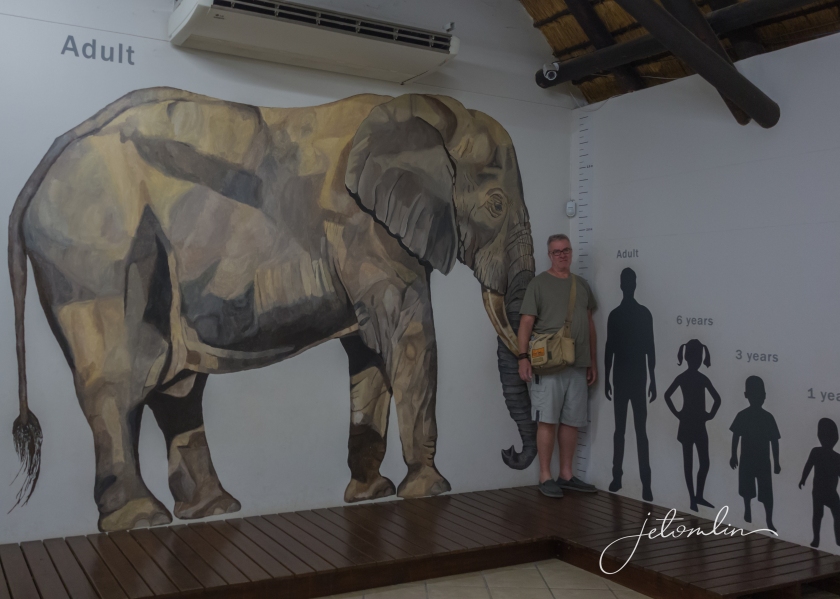
The Elephant Museum 
Having seen all of the Big 5 multiple times and more lions than we could ever hope for, Deb was anxious to see her first hippo. We found some grazing in the river just north of Letaba. They were covered with green plants and water lilies so we affectionately dubbed them “Chia hippos.”

December 1, 2018. In addition to our full-day drive with Edward we had also scheduled an evening “Bush Braai.” Our drive would be cut a little short in order for us to catch our breath and get ready for the night. We decided to swing by the lion kill on the S36 once again. All that was left were a few bones and a now picked-clean skull. Elephants had taken over the water hole. One approached us, coming closer andcloserandcloser. JET whispered “Edward … are we good?” “We’re good, just stay calm,” he replied. The ellie stopped within two meters of the vehicle and just stood there, eyeing us. None of us dared to even breathe. Afterwards we all said “we should have taken a photo, we should have taken video, we should have tried a selfie!!” But in that moment we were, quite literally, awe-struck.

After a lunch and a short recess, we were back on the road at 4:30pm for a sunset drive, followed by the Bush Braai. Soon into our drive we spied another bucket list first: a giant kingfisher!

The afternoon sky turned a brilliant red as we watched the sun go down.

On our way to the braai spot Edward pointed out yet another Verreaux’s eagle owl, silhouetted against the evening sky.
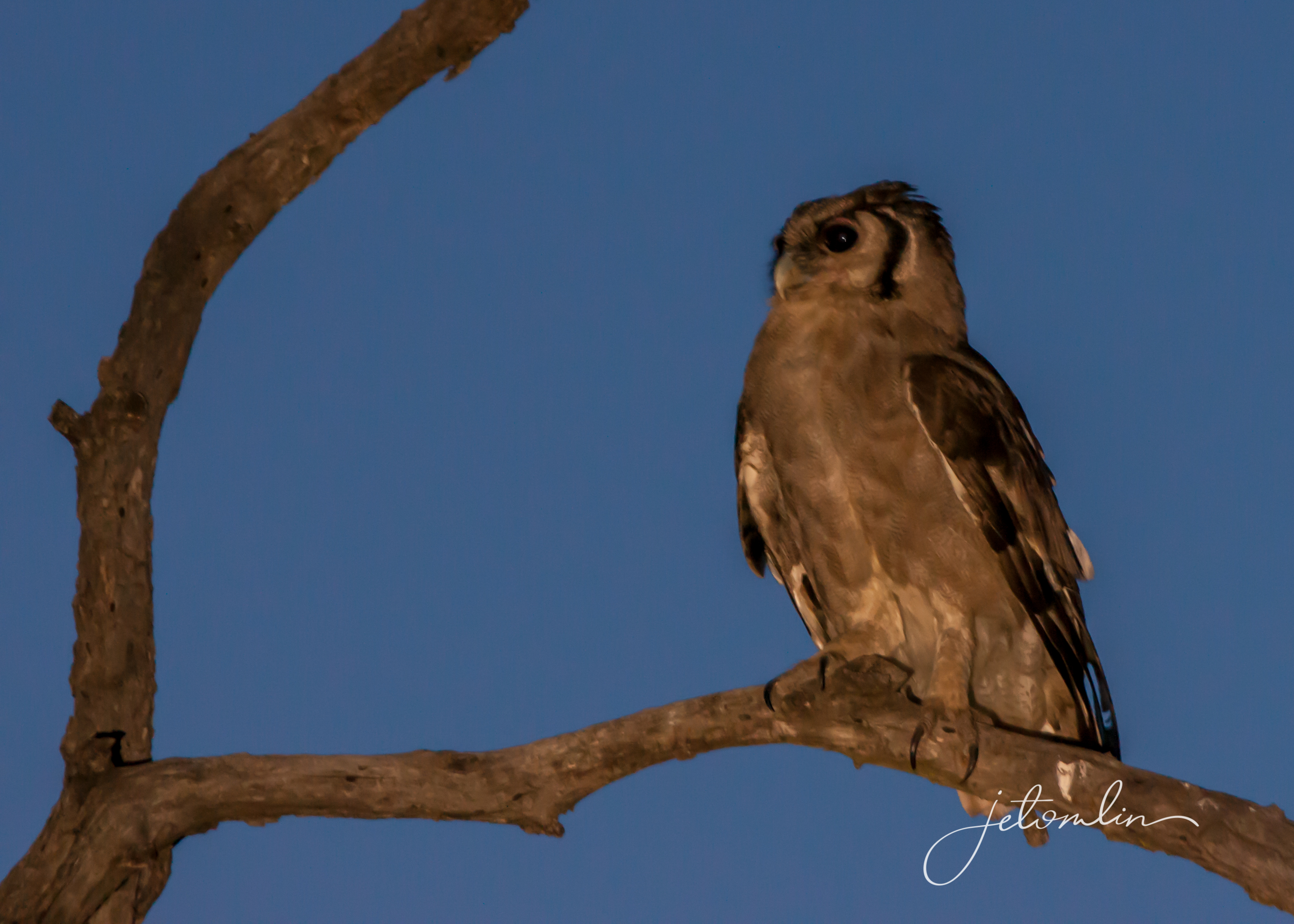
We arrived at the Bush Braai and much to our surprise and delight found a table set with linens and crystal. It was an experience of a lifetime: candle-light dinner under a blanket of stars so many you could barely see the sky. An armed guard to escort you to & from a charming outhouse (also candle-light) serenaded by the roar of lions off in the distance. At one point a hyena ran past our table, attracted by the smell of food.

Our table under the stars 
The Bush Braai team

After dinner Edward suggested we drive home in the direction of the lion roars. We found not-one-but-two “honeymoon couples” on the way back to camp. It was truly a night we will never forget.


Our original reservation was for four full-day ranger guided drives. But two things had happened during the week to change this. First we found Edward to be both charming and entertaining: an excellent spotter, very knowledgeable about the fauna and flora of the park, and with the good sense of humor needed to put up with our singing to the animals. He was into it, calling out sightings for JET’s tally and singing along with us. “Steenbok!” he’d call, no matter how many we’d seen. “Kudu!” “Impala!” Secondly, that horrendous self-drive down the S39 left us literally and figuratively quite shook up. We inquired if he might be available for a fifth guided drive on our last full day, Dec 2. And he was! Today was to be another long, full day. Our plan was to drive south to Lower Sabie so that Deb and Sheila could experience the southern end of the park. Our itinerary also included a late breakfast stop at the Skukuza Golf Club.

But first, Edward wanted to swing by the “honeymoon couple” from the night before. We took a no-access short cut to the spot, and sure enough they were just a few meters off the road. The “action” was over within seconds and they both promptly fell asleep. Edward explained that this activity would go on for several days, until the female was satisfied that she was pregnant, and to give them 15-20 minutes. Sure enough, about 15 minutes later the female signaled she was again ready. We stayed for round two and then let other cars take their turn while we traveled south.
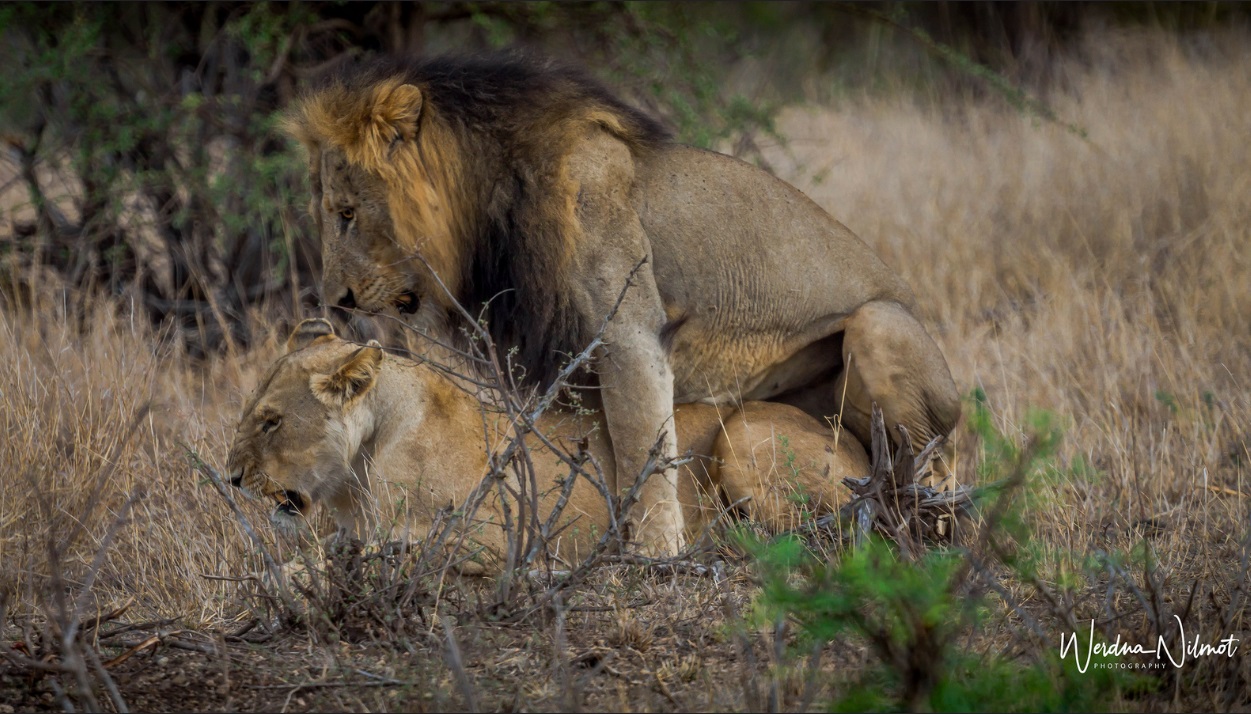
Sheila is an avid golfer so today was a special day for her. While we were waiting for our food to arrive at the Skukuza Golf Club, she disappeared. We looked out onto the course and there she was, asking a stranger if she could borrow his club to hit a ball. He graciously obliged and Sheila took a swing on one of the most exotic golf courses in the world.

The day grew long and hot. 99 degrees hot. There were many hippos at Sunset Dam but none were willing to do much more than break the surface of the water. We headed to Lower Sabie’s Mugg & Bean restaurant for lunch. JET had heard of resident owls at the restaurant and the waitress was happy to point them out sitting high in the rafters.


After lunch we crossed the river to drive north via the H10. And right at the bridge we spied, much to everyone’s delight, a very large hippo getting in and out of the water. We all got close-up “money shots” of this beautiful animal as he crossed under the bridge directly below us.

The drive home included a quick stop at Tshokwane. The restaurant was closed and the parking lot and men’s room had been taken over by a herd of elephants.

We arrived back at Satara shortly after 6pm, another exciting Big 5 day. It was time to finish up our packing so we could be on the road first thing the next morning. We planned a leisurely drive south to Skukuza with enough time to stop for brunch at Tshokwane and get to the airport for our 1:30 flight back to JNB.
We dropped the keys in the box and were on our way by 4:30 the following morning. After a quick drive west to look for wild dogs around Orpen, we pointed ourselves towards Skukuza for our final game drive of the trip. The ellies were in the riverbed below Tshokwane and we spent our last morning in the Kruger observing these beautiful, magnificent creatures.
We didn’t shoot much video this trip but here are a few seconds of our magical last breakfast with the ellies:
This trip exceeded all expectation. We visited six different camps and saw over 450 unique animals sightings — not counting the number in any given herd or flock — everything from an African wild cat to Zebras. We were blessed to see the Big 5 many times and lots of babies of all species: lion cubs, leopard cub, ellie calves, impala calves, hyena cubs, and even two vulture chicks high in a nest.
I have a T-shirt imprinted with “There is a little bit of Africa in all of us.” And that is certainly true regarding the Kruger. Once its magic captures your heart it stays with you forever. We are already dreaming about the day we will return.

Flickr Albums:
Tall Guy
https://www.flickr.com/photos/werdnanilmot/albums/72157704606565405
JET https://www.flickr.com/photos/jetomlin/albums/72157674505329987
p.s. A brief note regarding rhinos. As in the past, we have avoided mentioning any specifics in this blog. Poaching is still a huge problem in the Kruger and rangers are fighting what has been termed a war. God bless the guys who are out there every day and night! We thank you from the bottom of our hearts.


This was an awesome adventure. Your photos & words are great memory reminders of the wonders that the Kruger shares.
LikeLiked by 1 person
*So* happy to get to enjoy this trip vicariously. I would’ve *died* during those 16 hour flights. Feeling some pain from the bumpy drive, too. The Flickr pages are wonderful. The trip does, though, sound completely exhausting – both physically and emotionally. How long can you keep getting “wowed” over a ten day period?? Interesting that you went back to guided drives. Can definitely see some advantages to it. Thanks so much for sharing.
kb
LikeLiked by 1 person
kb: We have been to the Kruger three times in four years….the “wow” factor is potentially present every minute you are on the road, whether a self drive or a guided one. We really didn’t “go back” to guided drives as much as we expanded the number of guided drives vs self drives. We were there for basically nine days in 2015 and 2016, and 10 days in 2018. We went on two guided drives the first two times, and five this time. For us, the guided drives are worth the investment, because of 1) the freedom and superior angles provided by a 10 seater, 2) the knowledge and spotting capability of the guide and 3) the access to restricted roads.
I think that everyone should experience a self drive, and for some, a full day guided drive might be over kill…
LikeLike
I loved your journal and all the pix, thanks so much. A friend and I are going to Kruger for two weeks in May, my fourth Africa trip, but the first as a self-drive. Roughly how much did the full-day guided drive cost, and did you have to book it far in advance?
LikeLike
Hi Ginni – Thanks for the kind words! The prices for the full-day drives vary from camp to camp. You are basically buying out a ten-seater so it depends on how busy that camp is. (Lower Sabie costs a lot more than Letaba, etc). We contacted the camps as soon as we booked our accommodations, you should do the same. If you are at all interested in photography it is well worth it! jet
LikeLike
Figure that the minimum people for a full day drive in most camps is 4 people, at R1500+/- per person,not including a tip. Two people can book a full day drive…you will just have to pay for the minimum # of people. At roughly R14 to 1 USD, figure it will cost around $450 US for 4 people plus whatever tip you give the guide (we gave R200 per person)…you do need to make arrangements as far in advance as possible…TG
LikeLike
Thank you both! 🙂
LikeLike